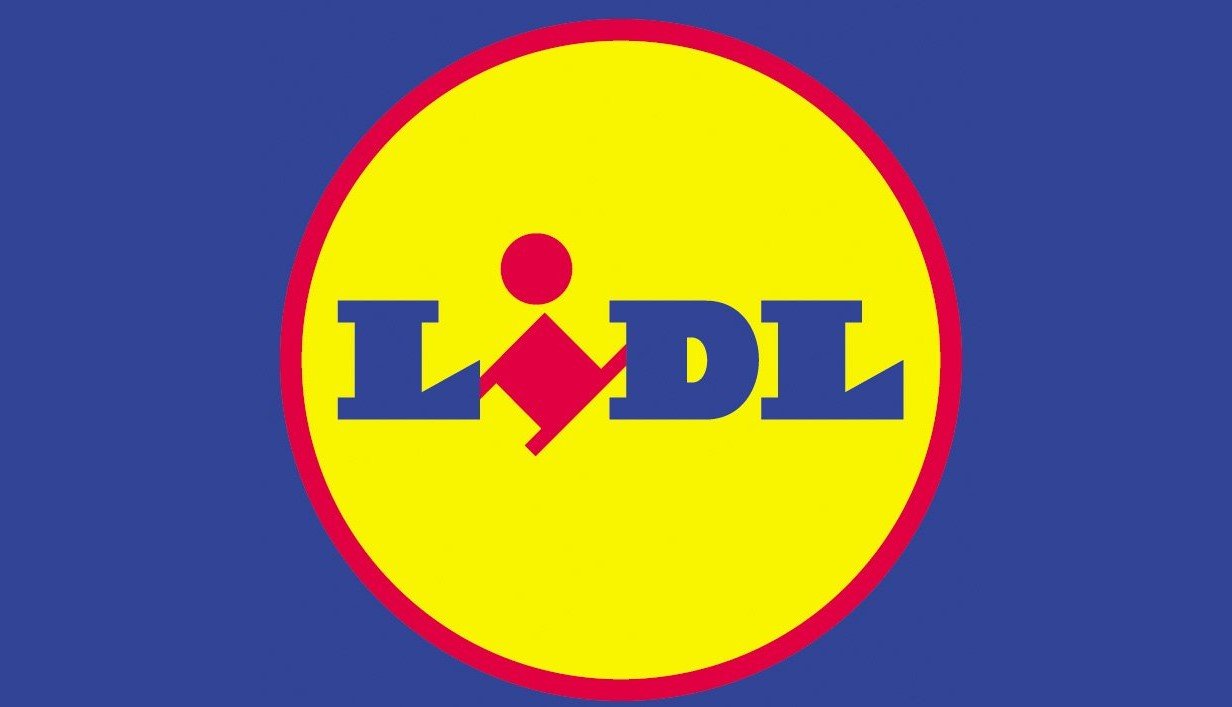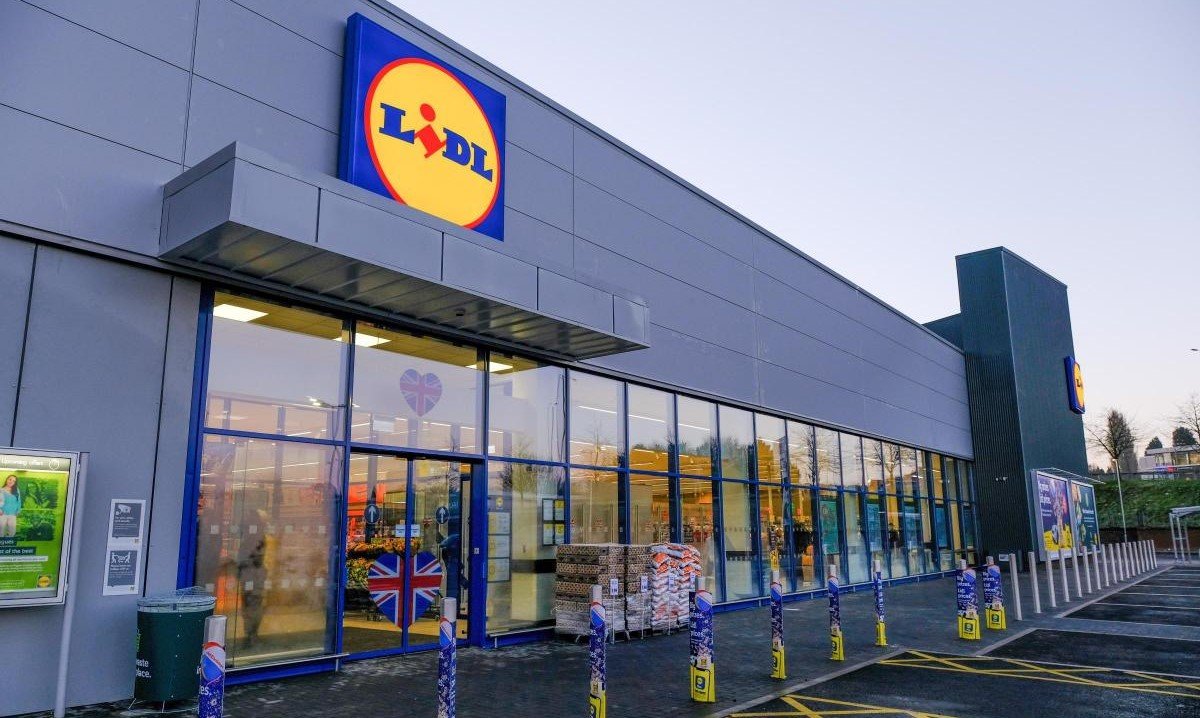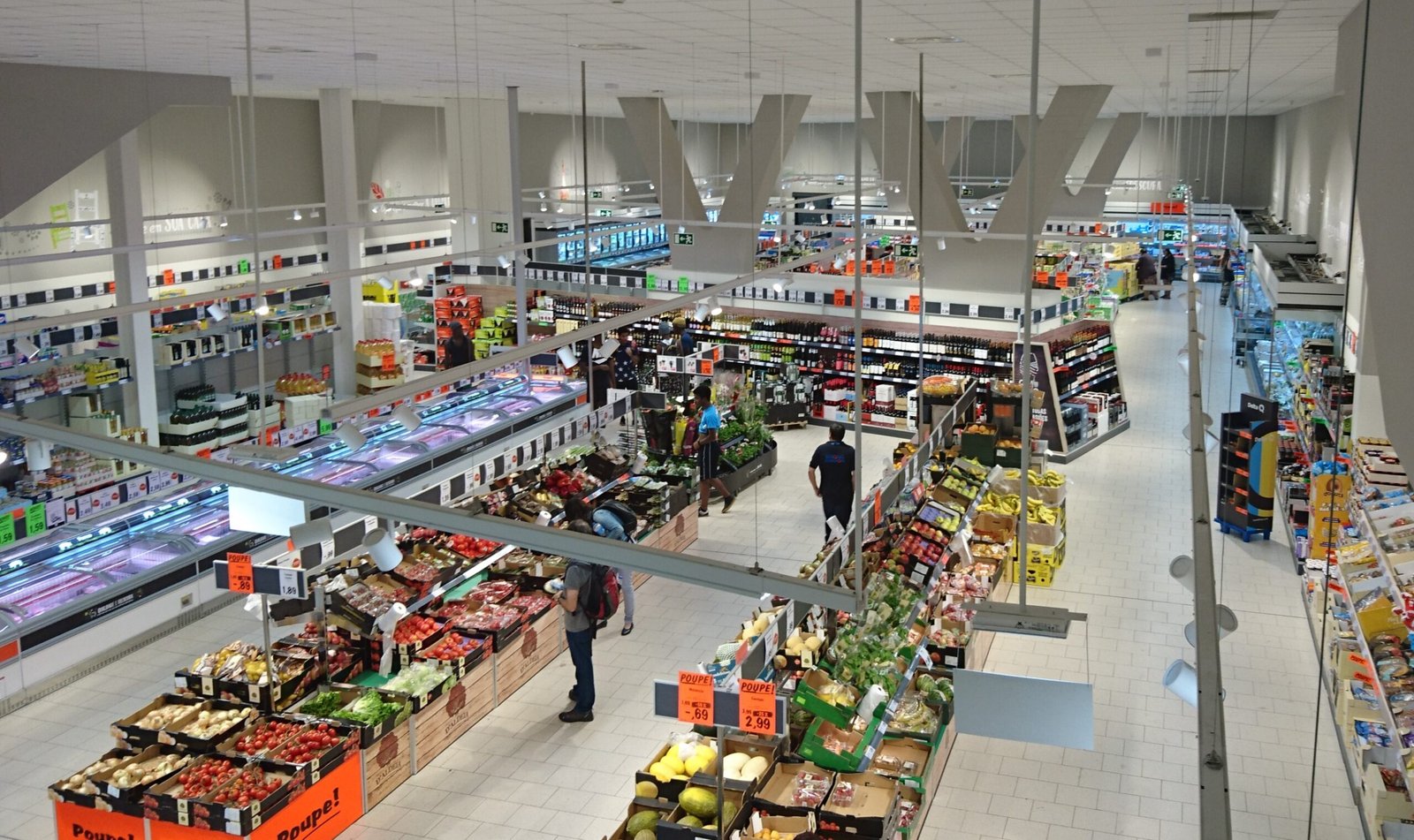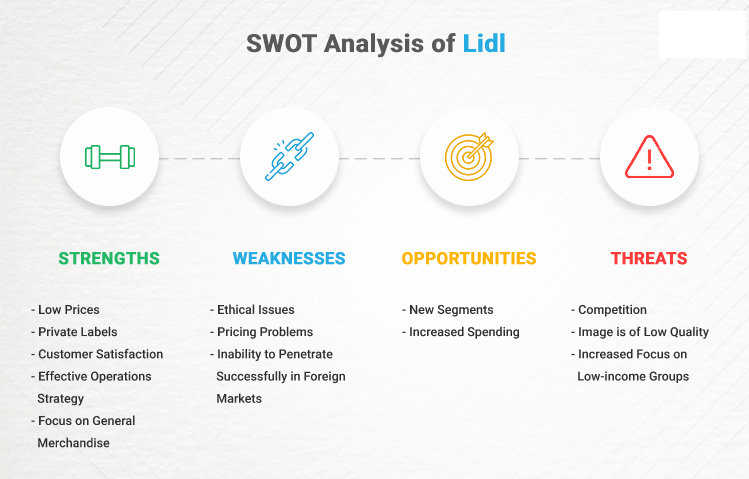Lidl SWOT analysis – SWOT analysis of Lidl: Lidl is an international chain of supermarkets that are located in Germany however, it has operations throughout Europe, the United Kingdom, and the United States of America. Lidl is credited with more than 10,000 discount stores and is a close rival to the chain supermarket Aldi. Lidl was among the very first stores with discount prices around the globe and was established nearly 40 years ago Neckarsulm by Dieter Schwarz.
The company operates in around 28 countries and has 315,000 employees in all parts of the globe. The retailer promises healthy, fresh, and value-added items at affordable prices.
The products offered at Lidl are meats and veggies wine, grocery items as well as special purchase items, everyday collections, and garden-related products. It is not too far to move to the internet, this discounted store also offers an app that is able to be used by customers to place orders online. In 2017 the chain of supermarkets reported revenues of 24.33 billion euros and is the biggest discount chain in Germany.
Lidl fun facts: Lidl was first founded in Germany as a grocery wholesaler back in the 1930s by a member of the Schwarz family.
About Lidl – SWOT analysis of Lidl
Contents
- 1 About Lidl – SWOT analysis of Lidl
- 2 Lidl Competitors
- 3 SWOT analysis of Lidl – Lidl SWOT analysis
- 4 Strengths of Lidl – Lidl SWOT analysis
- 5 Weaknesses of Lidl – SWOT Analysis Of Lidl
- 6 Opportunities of Lidl – Lidl SWOT analysis
- 7 Threats of Lidl – SWOT analysis of Lidl
- 8 Overview Template of Lidl SWOT analysis
- 9 Conclusion
[wp-svg-icons icon=”office” wrap=”I”] Company: The Schwarz Group
[wp-svg-icons icon=”user” wrap=”I”] CEO: Christian Härtnagel
[wp-svg-icons icon=”user” wrap=”I”] Founder: Josef Schwarz
[wp-svg-icons icon=”calendar” wrap=”I”] Year founded: 1973
[wp-svg-icons icon=”location-2″ wrap=”I”] Headquarters: Neckarsulm, Germany
[wp-svg-icons icon=”stats” wrap=”I”] Annual Revenue: EURO€ 57 Billion
[wp-svg-icons icon=”bars” wrap=”i”] Profit | Net income: EURO€ 1.287 Billion
[wp-svg-icons icon=”users” wrap=”I”] Number of employees: 315,000
[wp-svg-icons icon=”pie” wrap=”i”] Products & Services: Discount store | High-quality, brand-agnostic products at discount prices
[wp-svg-icons icon=”globe” wrap=”I”] Website: www.lidl.com
Lidl Competitors
[wp-svg-icons icon=”pacman” wrap=”I”] Competitors: Carrefour | Tesco | Walmart | Woolworths | Sainsbury | Kroger | Target Corporation | Amazon | Dollar General | Best Buy | Coborn’s
SWOT analysis of Lidl – Lidl SWOT analysis
SWOT Analysis Of Lidl is brand-based. SWOT Analysis of Lidl evaluates the brand’s strengths, weaknesses, opportunities, and threats. Advantages and disadvantages can be attributed to internal factors while opportunities and threats can be attributed to external factors. We will be discussing Lidl’s SWOT Analysis. Below is the detailed SWOT Analysis of Lidl.
Let’s talk about Lidl’s SWOT assessment.
Strengths of Lidl – Lidl SWOT analysis
- Cheap prices Prices: The main reason behind the popularity of discount stores such as Lidl is the daily low prices they provide on the majority of everyday use items. Lidl sells the most important items at prices considerably lower than competitors and there are regular specials and deals in a variety of specific categories.
- Customer satisfaction: Through low prices and faster checkout times, fewer waiting times, and better customer service, Lidl has succeeded in keeping its current customers and drawing new customers. The method employed in their marketing campaigns is concentrated on saving money by comparing the prices they offer with typical retail costs.
- Private label: Lidl has been successful in the introduction of private label brands into the majority of popular categories. The result is that by using price competition strategies, they’ve succeeded in forcing suppliers and rivals to reduce their prices dramatically.
- A focus on general products: Lidl focuses more on general merchandise. More than 25 % of their shelf space is allocated to general merchandise, which typically provides discount stores with higher margins than other merchandise categories. The general merchandise category also offers a greater turnaround time and can generate an abundant flow of cash and helps to offset the price-tag strategy for other less important products.
- Effective operation strategy: Like most discount stores, Lidl also has an emphasis on operational efficiency. From their warehouse to the close in the delivery chain, using the use of technology tools, the retailer has worked to increase productivity while also keeping tight control of cost. It is also important to ensure there is minimum waiting time in the back of the room, and that all products go straight to the shelves. The process of checking out is automated and checked regularly to ensure that there are no inconsistencies. The cashier handles the billing at the time of the checkout and bagging is handled by customers, which increases the productivity of the workers.
Weaknesses of Lidl – SWOT Analysis Of Lidl
- Inability to compete in international marketplaces: Quite unlike global rivals such as Target as well as Walmart, Lidl has been confined to Europe, the UK, and the USA. It has not focused on Asia which has several potential emerging market opportunities, including China in particular and India.
- Price issues: Lidl has always been well-known for its discriminatory and predatory pricing. There have been instances where they have made suppliers cut prices. Lidl is also undercutting the competition with shady pricing strategies.
- Ethics Questions: Lidl has faced criticism from a variety of sources regarding its ethical business practices. It is also involved in numerous controversies, including the case of employees being spied on in 2008, the extortion case in Lithuania in the year 2016, numerous poisoning cases across a wide range of goods in different regions, and numerous religious violations.
Opportunities of Lidl – Lidl SWOT analysis
- New segments: Retail across the world is on the rise and, with the rise of online shopping, geographical borders are no longer a factor. This has led to the opening of new segments and new markets for retailers around the globe.
- More spending: In light of the increase in the percentage of households that have two incomes and the tendency to spend among millennials around the globe has increased and the millennials are also believed as impulsive in purchasing, creating which is a chance for retail stores.
Threats of Lidl – SWOT analysis of Lidl
- Competition: The main competitors of Lidl are Aldi, Morrisons, Asda, Sainsbury’s, and Tesco. Furthermore, they also face competition from online retailers like Amazon.
- Focus on lower-income segments: The focus on an economic segment could make the impression of a low-quality player. In the long term, it will affect the growth of a company such as Lidl which must remain within the low-income segments with low value.
- Image of poor quality: Because the majority of the items sold at Lidl come at a bargain price and are mostly private label brands, these items are believed to be of inferior quality in comparison to other brands.
You May Also Like:
- Timex SWOT Analysis – Timex Fashion Watch SWOT Analysis
- Tissot SWOT Analysis – SWOT Analysis of Tissot
- Emami SWOT Analysis – SWOT Analysis of Emami
- Shoppers Stop SWOT analysis – SWOT analysis of Shoppers Stop
- Fossil Group SWOT Analysis – SWOT Analysis of Fossil Group
Overview Template of Lidl SWOT analysis
Conclusion
To sum up, Lidl has a huge mass of incredibly innovative services providing enough options. The Company has the advantage of the brand trust of thousands. It has been updated with technology although not the most advanced but not behind as well; however, Lidl should start focusing on creative advertisement to attract more inventors in India as well as internationally. It must consider international expansion.
This is the SWOT analysis of Lidl. Please let us know if you have additional suggestions to add.
[wp-svg-icons icon=”bubbles” wrap=”i”] Let us know What do you think? Did you find the article interesting?
Write about your experiences and thoughts in the comments below.



